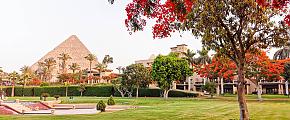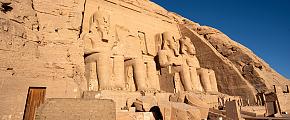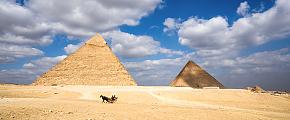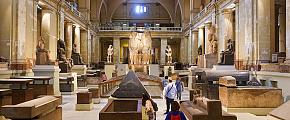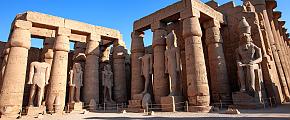Lost in Egypt: Land of Legend II
Written and published by Miranda Zhang, Travel Expert
Take a cruise sailing down the Nile, you will find a land of sand-covered tombs. Over the past thousands of years, when the sun rises from the East Bank, everything in Luxor wakes up in the first glimmer of light. Ancient Egyptians believe that human's life is like the sun, which rises up from the East and sinks in the West. That's why in the East Bank of Nile scatters temples symbolizing vibrant present life and in the West Bank, located hundreds of tombs where sleeps kings and queens, among which the most famous Tutankhamun's tomb was unearthed there. When you get across the Nile, it feels like going through ancient Egyptians' life and death. Now Luxor is regarded as world’s greatest open-air museum – nothing else in the world parallels the scale and grandeur of these monuments that have survived from ancient Thebes.
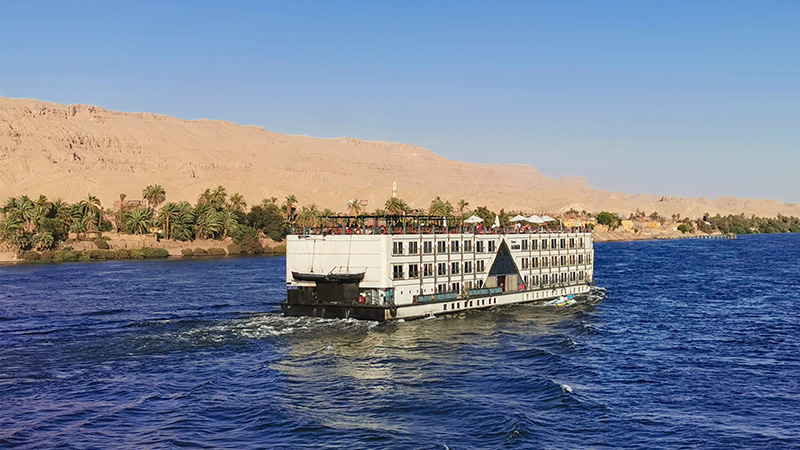 Enjoy the Beautiful Scenery of the Nile on a Cruise
Enjoy the Beautiful Scenery of the Nile on a Cruise
My exploration started on the east bank with the Luxor Temple, one of the attached Temples of Karnak. What once linking them is the Avenue of Sphinxes. However, some parts of the avenue have been buried underground now. Upon getting into the temple, there come 3 Statues of Ramesses II, which were originally 6, but 3 went missing and only 2 seated figures and 1 standing statue remain.
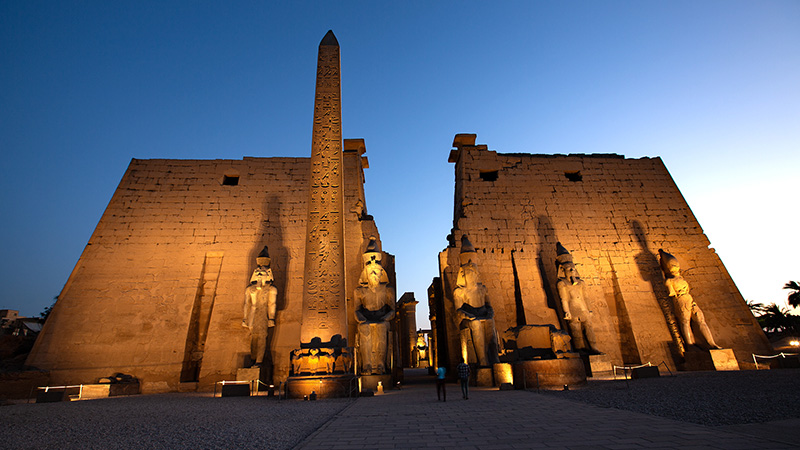 Luxor Temple
Luxor Temple
Inside the temple, there is a mosque called Abu el-Haggag standing atop the ruins in the northeast corner of the Court of Ramesses. According to my tour guide, the builder didn’t realize it was the site of sand-buried ancient temples beneath when they decided to start the work. When Luxor Temple was unearthed in the 19th century, the Muslim community strongly rejected any attempt to tear down the mosque. The story reveals the sorry fact that in Egypt, ancient civilization can only be excavated by efforts of archeologists, not to mention the long lost skill of mummification.
Unlike temples on the east bank, tombs on the west bank are scattered, which makes it hard to visit all on foot at one time. Luxor is extremely hot and dry - after a day’s tour, you will see how the mummies can have been well kept for millenniums. So try to bring plenty of water and a sun hat. On the way, you will see two faceless Colossi of Memnon rising majestically about 20m in the Theban necropolis for 3,400 years. They functioned to guards at the gate to Amenhotep III's memorial temple, which was the largest temple ever built in Egypt but very little remains today due to annual floods, earthquakes, and dismantlement by later rulers.
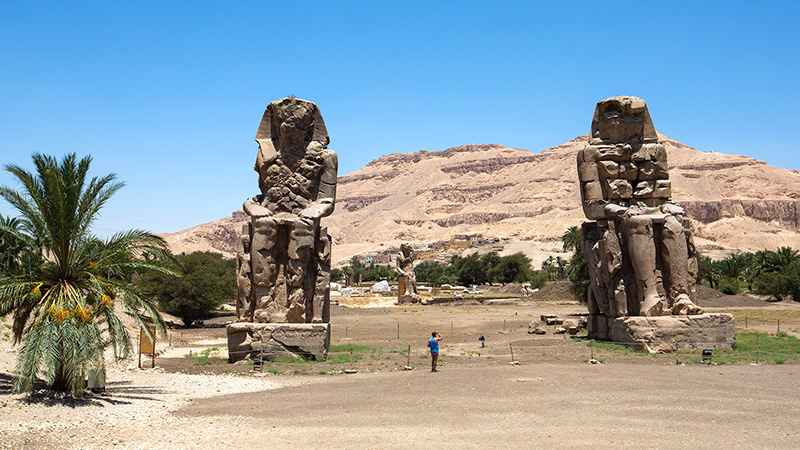 The Twin Seated Statues of Amenhotep III - Colossi of Memnon
The Twin Seated Statues of Amenhotep III - Colossi of Memnon
Ancient people considered it good luck to hear the mumbling of the twin statues at sunrise, which was believed to be sob of Memnon, while modern saying goes that it was caused by the heat of the sun and the humidity of the night. However, after Septimus Severus, Roman emperor from 193 to 211, repaired the statue in the third century AD, the statues’ sob was heard no more. For the following thousands of years, they just stand there and witness the history in silence.
There are at least 75 tombs in the Valley of the Queens, where wives and descendants of Pharaohs were buried in ancient times. At the time of my visit, only two tombs were opened, Tomb of TiTi and Tomb of Amunherkhepshef. The most famous one, Tomb of Nefertari, was in closure and opens occasionally. To better preserve the precious items buried along, photography is not allowed inside the tombs.
The Tomb of TiTi is not so well protected and the murals on the walls are faded, but you can still make out the way Titi is depicted: a beautiful young girl in costume and had braided hairstyle; meanwhile, a conservative middle-aged woman with make-up. Egyptologists are not sure which pharaoh she was married to, some believe she was a wife of Ramesses III.
On the contrast, the nearby Tomb of Amunherkhepshef (rumored as TiTi's son) keeps beautiful and well-preserved murals. Amunherkhepshef was still in his teens when he died and according to the walls of the tomb, his father Ramesses hold his hand to introduce him to the gods that would help him along his journey to the afterlife. The bright colored murals look like being painted yesterday. Ancient Egyptians used egg white to keep the colors fresh. Would love to know what the egg taste like? Hold it - saliva will make damage to these priceless heritages!
Before proceeding to the Valley of the Kings, we stopped over at Mortuary Temple of Hatshepsut, a characteristic temple in Egypt because of its design and decorations. Hatshepsut was the fifth pharaoh of the 18th dynasty of Egypt and is generally regarded by Egyptologists as one of the most successful pharaohs, reigning longer than any other women of an indigenous Egyptian dynasty.
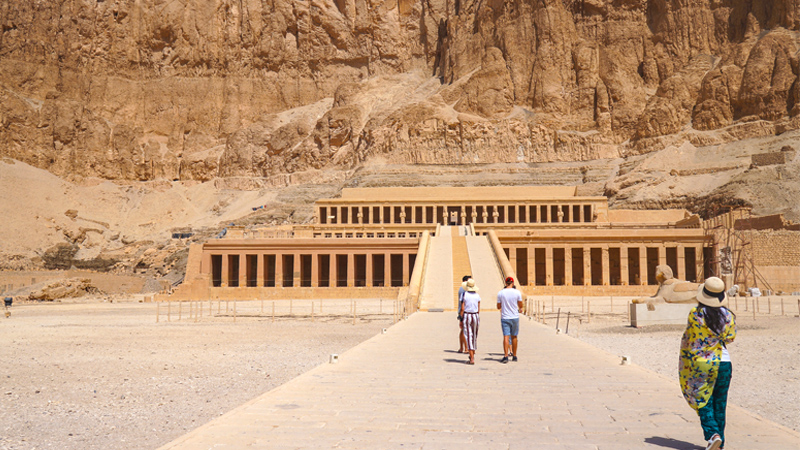 Mortuary Temple of Hatshepsut
Mortuary Temple of Hatshepsut
The main buildings of the temple were destroyed in an earthquake and were restored by an archaeological team over the last 25 years. At present, some parts are still in giant rubbles outside the temple.
It could be hard to remember this female pharaoh's sophisticated name, but it’s easier to catch up her love story. Senenmut, a middle-classed architect and also Steward of the God’s Wife (Hatshepsut), spent his lifetime to design and construct the incredibly beautiful temple for Hatshepsut. After his death, with the favor of Hatshepsut, he was buried gloriously inside the Valley of the Kings.
The Valley of the Kings was built in the hills of the barren tract west of Luxor, aiming to get close to the dynastic roots of the Pharaohs and powerful nobles who rest in peace here.
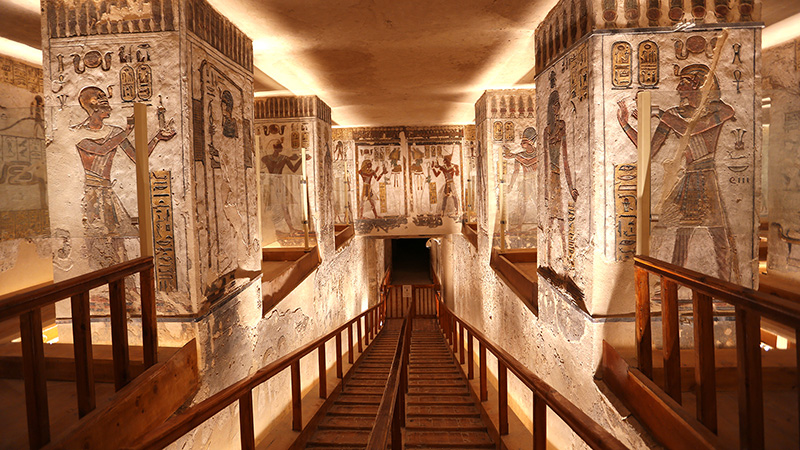 The Valley of the Kings
The Valley of the Kings
In the early times of Egypt's Old Kingdom, pharaohs preferred Pyramids but those magnificent constructions also attracted treasure hunters. Later, New Kingdom pharaohs chose the valley as their burial ground for the secluded site enclosed by steep cliffs was easy to be guarded. Most of the tombs successfully played hide and seek with tomb robbers owing to complex chamber designs. The latest discovered one, Tomb of Tutankhamun, though being the least impressive amongst all, famed for the alleged "curse of the pharaohs" and the most remarkable funeral treasures unearthed in historic times, including the Gold Death Mask of Tutankhamun placed over the head and shoulders of Tutankhamun's mummy, now are on display at the Egyptian Museum in Cairo (I described the museum in the first part of my Egypt travelogue).
Pharaohs might never expect that their tombs would turn into attractions centuries later, obviously, these crypts cannot bear mass tourism. In fact, they have suffered great damage from carbon dioxide. Friction and humidity produced by the average of 2.8g of sweat left by each visitor have affected the reliefs and the pigments of wall paintings. Therefore, the local government has introduced a shifting policy, opening some tombs to the public while restoring others. A few seriously damaged tombs, such as Tomb of Ramesses II, have been shut down forever.
Egypt is a country blessed with half desert and half brine. On the East part of Egypt, you can find a lot of dynamic coastal cities like Hurghada, Sharm el Sheikh, and Dehab. The coast along the Red Sea has a rugged desert beauty above the waterline and a psychedelic vibrancy below. It is quite rewarding to explore on a multi-day outing to one of the globe's greatest dives or on an afternoon's snorkeling jaunt along a coral wall. The soft white beaches and blue crystal water will surely leave an unforgettable memory and will be the main reasons for your getting back to Egypt.


